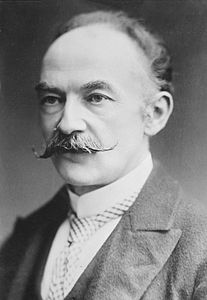Analysis of The Self-Unseeing
Thomas Hardy 1840 (Stinsford) – 1928 (Dorchester, Dorset)
Here is the ancient floor,
Footworn and hollowed and thin,
Here was the former door
Where the dead feet walked in.
She sat here in her chair,
Smiling into the fire;
He who played stood there,
Bowing it higher and higher.
Childlike, I danced in a dream;
Blessings emblazoned that day;
Everything glowed with a gleam;
Yet we were looking away!
| Scheme | ABAB CDCD EFEF |
|---|---|
| Poetic Form | Traditional rhyme Quatrain |
| Metre | 110101 101001 110101 101110 111001 1001010 11111 10110010 111001 1001011 101101 1101001 |
| Closest metre | Iambic trimeter |
| Characters | 338 |
| Words | 63 |
| Sentences | 4 |
| Stanzas | 3 |
| Stanza Lengths | 4, 4, 4 |
| Lines Amount | 12 |
| Letters per line (avg) | 22 |
| Words per line (avg) | 5 |
| Letters per stanza (avg) | 90 |
| Words per stanza (avg) | 20 |
Font size:
Submitted on May 13, 2011
Modified on March 31, 2023
- 18 sec read
- 416 Views
Citation
Use the citation below to add this poem analysis to your bibliography:
Style:MLAChicagoAPA
"The Self-Unseeing" Poetry.com. STANDS4 LLC, 2024. Web. 28 Apr. 2024. <https://www.poetry.com/poem-analysis/36557/the-self-unseeing>.


Discuss this Thomas Hardy poem analysis with the community:
Report Comment
We're doing our best to make sure our content is useful, accurate and safe.
If by any chance you spot an inappropriate comment while navigating through our website please use this form to let us know, and we'll take care of it shortly.
Attachment
You need to be logged in to favorite.
Log In